
by admin | Feb 19, 2011 | Blog
Before moving onto discussing Brand Positioning, we need to make sure that we understand that Communication alone does not create brand feelings.
Experience with the brand creates brand feelings.
Great Communication (Advertising or Promotion of any type) will make bad products and services fail faster.
On the other hand without great communication, the best products and services with the best customer service will fail unless they assist your audience to understand who you are, what makes you different and where to find you.
You need to
examine all the customer ‘touch points’ and deliver a brand experience your customers will want to come back for time and time again. Today customers expect to be vowed and entertained.
Related articles

by admin | Feb 19, 2011 | Blog, Promotion, Strategy
Before moving onto discussing Brand Positioning, we need to make sure that we understand that Communication alone does not create brand feelings.
Experience with the brand creates brand feelings.Great Communication (Advertising or Promotion of any type) will make bad products and services fail faster.
On the other hand without great communication, the best products and services with the best customer service will fail unless they assist your audience to understand who you are, what makes you different and where to find you.
You need to
examine all the customer ‘touch points’ and deliver a brand experience your customers will want to come back for time and time again. Today customers expect to be vowed and entertained.
Related articles

by admin | Feb 19, 2011 | Blog
 The way to become rich is to put all your eggs in one basket and then watch that basket.
The way to become rich is to put all your eggs in one basket and then watch that basket.
Image via Wikipedia
Andrew Carnegie 1835-1919
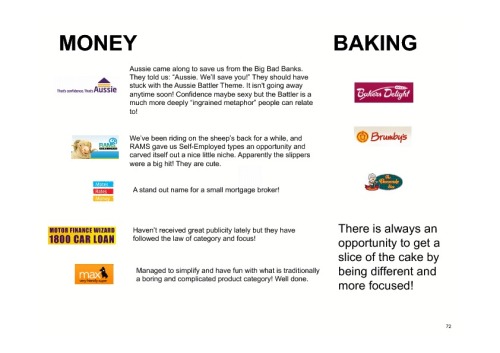
by admin | Feb 19, 2011 | Blog, Content, Design, Promotion, Strategy
A Brand Positioning Statement, also known as a slogan or a strap line, is the creative interpretation of the Brand Promise or USP which we discussed earlier.
Brand (Positioning Statements) should be able to hold their position in the long run and ideally achieve the following 4 criteria:
- Differentiate the business (Communicate the USP)
- Provide a Creative (Campaignable and Sustainable) platform
- Benefits should be ideally expressed explicitly to the customer
- Provide support to the brand name
Even when designing a brand from scratch it is difficult to satisfy all 4 criteria, so meeting 3 for a new brand or even 2 during a re-brand is often a great result.
You need to communicate with:
- Clarity
- Consistency
- Compression
to ‘cut through’ the clutter that is now prevalent in most service and product categories to consumers who are bombarded by more commercial messages than ever before!
So how do we do this?
Firstly we need to “own “own” a place in the consumer mind.
the easiest and most effective way of “owning a place in your customers’ and prospects’ minds is to focus on the things that matter. Most small and medium enterprises do not have the time or the money to be all things to all people, in fact neither do the very big companies, and when they try, they end up meaning nothing to anybody.
The result is at best mediocrity.
Focus demands Sacrifice – To own something you need to give up something else.
Focus on the particular type of buyer. Markets consist of buyers who differ in their:
- Wants
- Resources
- Locations
- Buying attitudes
- Buying behaviours
Simplicity adds value, by adding a halo effect for other benefits:
- Simple benefit (the most important promise) oriented word works best no matter how complex the product or market.
- The word must be exclusive.
- Avoid change, personalities don’t change, neither should your Brand.
- Positioning takes years and people don’t really change.
Next we will illustrate the power of brand positioning and focus with some examples.
How 2 Players Effectively communicated their Brand Positioning

Here are 2 industries and examples how the different players have through focus have found their niche and then effectively communicated their brand positioning.
Examples of the segmentation and brand positioning in the car…
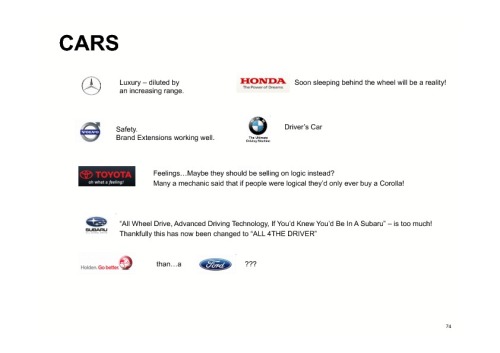
Examples of the segmentation and brand positioning in the car industry.
Positioning examples through segmentation in the car insurance…
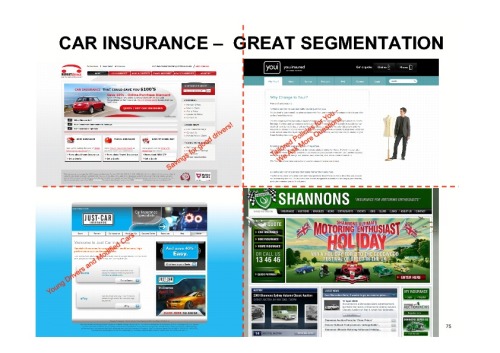
Positioning examples through segmentation in the car insurance category.
Most of the builders don’t have a positioning statement…
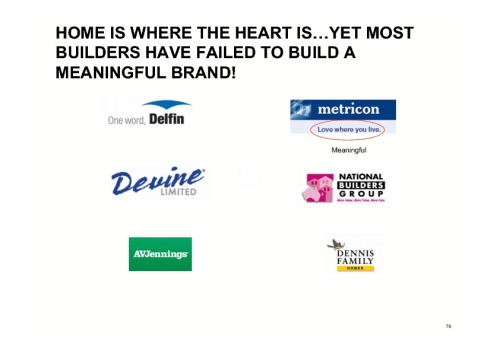
Most of the builders don’t have a positioning statement and are missing out on a great opportunity to truly connect with their prospects as well as be able to develop creative and more effective communication.
There is always an opportunity to be the “first”…
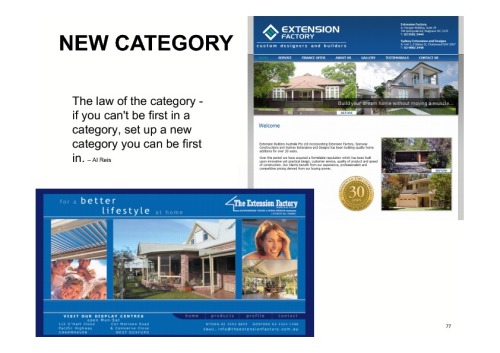
There is always an opportunity to be the “first” through even more focus. At the same time one has to be careful to protect their brand name!
…and then you can focus some more!
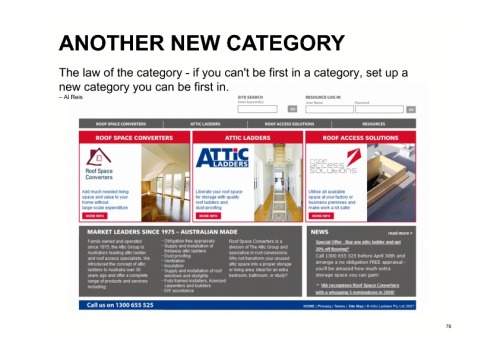
…and then you can focus some more!

by admin | Feb 17, 2011 | Blog
Why are today’s smart marketers talking about Brand Promise rather than the all too familiar USP – Unique Selling Proposition?
The answer is simple. The low barriers to entry in most industries created by the free and almost instant flow of information, resulting in the hyper-competitive nature of today’s marketplace means there are very few unique products and services and if they are unique to begin with they do not stay so for very long.
This paradigm shift has repercussions for for every modern enterprise. It means that brand owners and marketers must create unique experiences for their customers and communicate them clearly to their prospects. Because these experiences are what will differentiate them from their competitors. To do so they must work out what it is that they can promise their customers.
Product, Price, and Place (distribution) can be easily copied by competitors, which is why marketers invest much time and budget into Promotion (Communication). What can not be copied is the relationship, the emotional connections you develop with your customers. And like all relationships, they require consistent and clear communication.
Brand Promise must be:
- A Benefit that is relevant and important to the target market.
- A benefit that is different from the competitors.
- A benefit that your company is able to deliver.
The benefit may be:
- Functional
- Emotional
- Experiential
- Self-Expressive
Brand Promise is ideally expressed as:
Only (name of your brand) delivers (relevant differentiated benefit) to (target customer).
The Brand Promise is a critical ingredient that assists marketers work out the Positioning Statement.





 The way to become rich is to put all your eggs in one basket and then watch that basket.
The way to become rich is to put all your eggs in one basket and then watch that basket.








Recent Comments